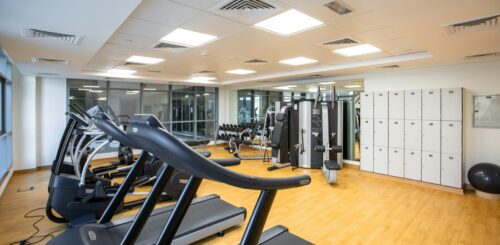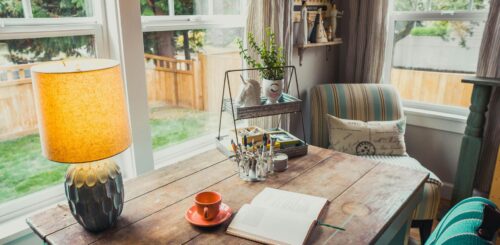Relocating can be both exhilarating and nerve-wracking. Amid the chaos of packing and logistics, your flooring often bears the brunt of heavy foot traffic, furniture shuffling, and unexpected spills. Our guide on how to protect floors when moving offers essential guidance to ensure that, as you transition to a new space, you leave your current one safe and pristine. Stick around to discover practical steps to guard your floors against potential damage.
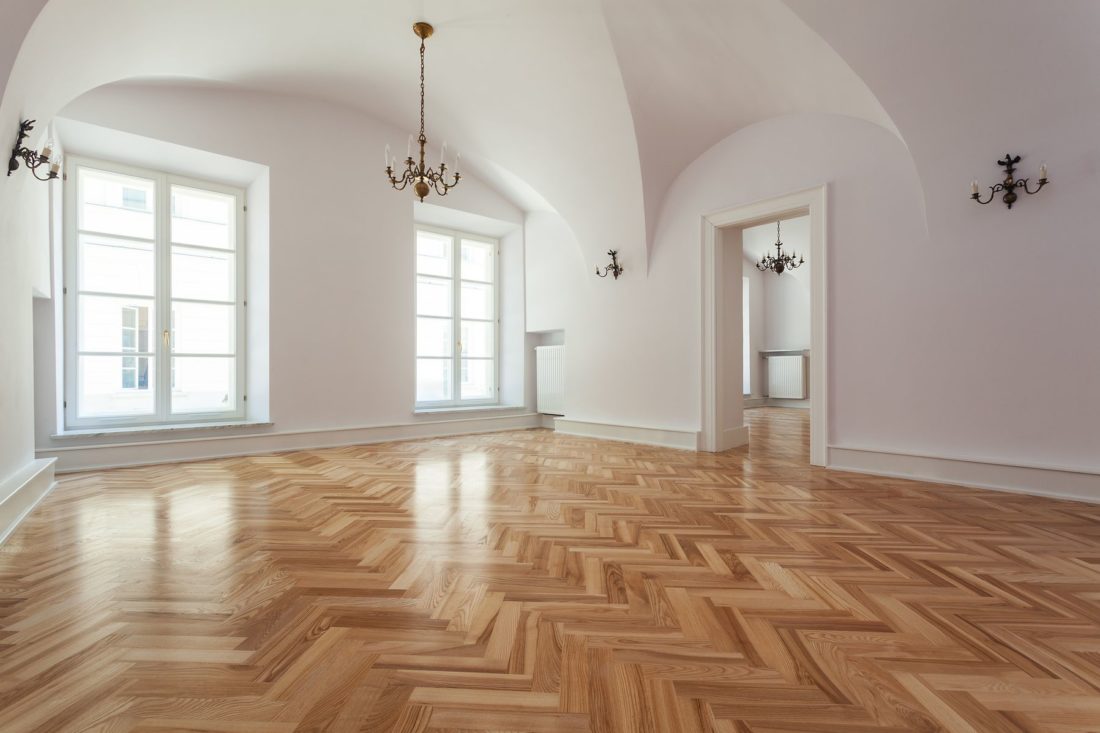
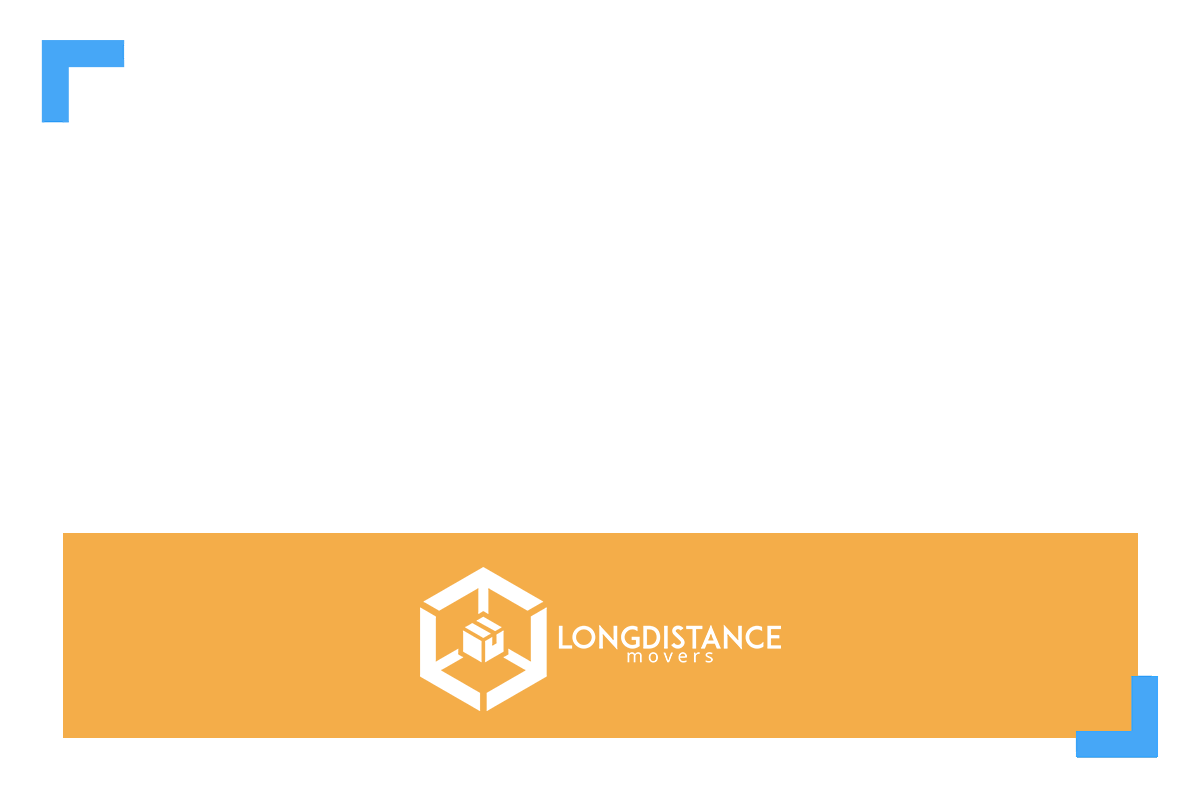
When it comes to moving, floor protection is a must. Start by assessing the floor type and vulnerability, and figure out what the high-traffic areas are. Gather protective materials and create a moving path. Don’t forget to prepare and wrap furniture. Use different floor protection techniques. You’ll also have to figure out how to move your belongings safely. If you’re planning to hire cross-country movers and get some long-distance moving services, protecting your flooring will make their jobs much easier, resulting in a more efficient move.
Assess the Need for Floor Protection
Before embarking on any protective measures, it’s crucial to evaluate your home’s floor protection needs. Each relocation, depending on the size, type of furniture, and number of movers, poses varying risks to floor surfaces. An initial assessment helps in strategizing and allocating resources more effectively.
Floor Type and Vulnerability
How to protect wood floors when moving – or any other type of floors? Different materials have distinct vulnerabilities. Hardwood floors, while elegant, are prone to scratches and dents. Tile flooring, particularly ceramic ones, can crack under heavy pressure. Carpets, on the other hand, can easily be stained or torn. Furthermore, the current condition of the floor can dictate the protection needed. A newly polished hardwood floor or a freshly laid carpet would require more meticulous care compared to older flooring.
Identify High-Traffic Areas
Every home has those areas that see more footfalls than others – hallways connecting rooms, the living room, which serves as the hub for many activities, and entryways where dirt and debris from outside can easily be tracked in. Identifying these high-traffic zones is paramount to ensure that they receive extra protective layers or barriers, minimizing potential damage during the relocation to a new house.
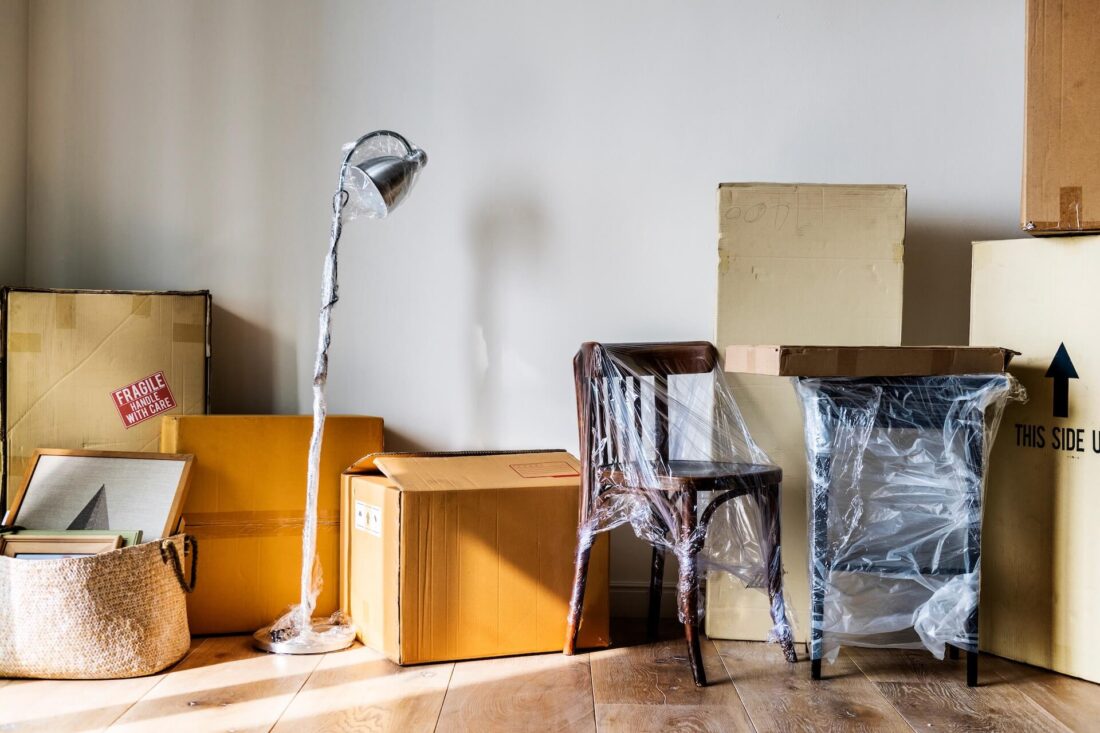

How to Protect Floors When Moving – Preparation Is a Must
How to move appliances without scratching the floor? Protecting your flooring when relocating to a new state isn’t just a task – it’s a strategy. The chaos and rush can put floors at risk for scratches, dents, and other damages. However, with meticulous preparation, these relocation mistakes can be avoided. Remember, the objective is not only to safeguard the aesthetic appeal of your floor but also to spare your relocation budget the potential repair or replacement costs.
Gather the Necessary Protective Materials
A key aspect of this preparation involves acquiring the right protective materials. Depending on the floor type and the furniture being moved, your needs might vary. Cardboard is a versatile and affordable option, ideal for absorbing shocks and preventing scratches. Plastic sheets act as an effective barrier against spills, especially when transporting liquids.
Blankets can be laid down to offer cushioning against heavier items. And then there are furniture sliders, which are great when it comes to weighty furniture pieces without scratching the floor beneath. Investing in these materials not only ensures protection but also provides peace of mind.
Create a Moving Path
An organized relocation is an efficient and safe one. To minimize the potential for floor damage and protect hardwood floors during the move, it’s advisable to map out a clear path – the designated route that movers, whether professional or friends, should follow. Mark this path using rugs or protective coverings like cardboard or plastic sheets, especially in high-traffic areas. This simple step can reduce the chances of accidental damage and streamline the relocation process.
Avoid Dragging the Furniture
Furniture, with its bulk and weight, poses a significant threat to floor integrity. There’s one crucial relocation tip to keep in mind – always lift furniture, never drag. Dragging not only risks scratching the floor but can also damage the furniture itself. For heavier items that can’t be lifted easily, furniture sliders become essential. They are designed to reduce friction, making it easier to relocate large pieces. Attach them to the base or legs of your furniture, ensuring the smooth side faces the floor, allowing for a graceful glide without the risk of damage.
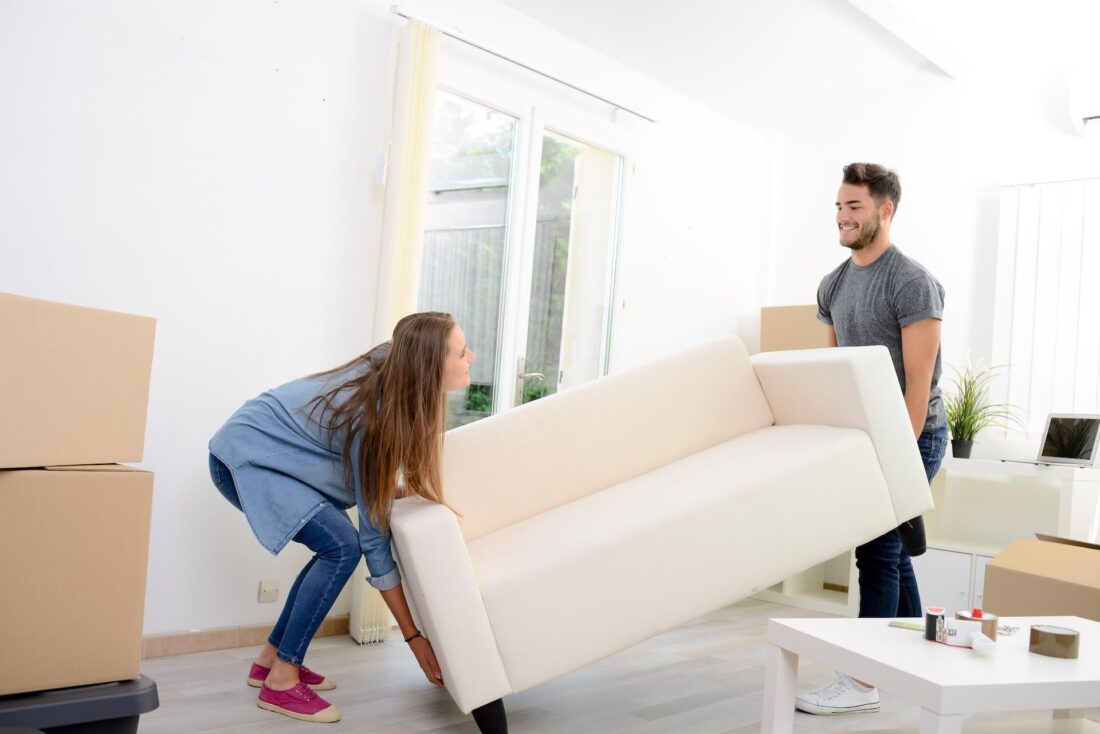

Embrace Different Floor Protection Techniques
As you approach the relocation day, recognizing the vulnerability of your floors is paramount. Each type of floor, from polished hardwood to delicate tiles, requires a specific protection strategy. Embracing a blend of techniques tailored to your home ensures that the integrity and beauty of your flooring remain intact throughout the relocation process.
Cardboard or Masonite Sheets Can Prevent Dents
One of the first lines of defense against potential damage is the use of cardboard or masonite sheets. These sheets are ideal for distributing the weight of furniture and protecting floors from the risk of dents or scratches. When laying down these sheets, overlap the edges to ensure complete floor coverage. It’s essential to secure them properly to avoid tripping hazards. Using tape or a non-residue adhesive can help keep the sheets in place, ensuring they remain effective and don’t cause additional issues.
Moving Insurance
All your stuff is secure with Long Distance USA Movers, but in case something does happen to it, there’s a moving insurance policy in place. We offer both basic Valuation Coverage and Full Value Protection.
Learn moreAuto Transport
Move your car across the country in an open or enclosed trailer – for an affordable fee. We offer car transport as a standalone service, but you can bundle it with your household move and get a hefty discount.
Learn moreStorage Services
Our spacious climate-controlled units will protect your things until the drop-off. No need to worry about them because all items are labeled and secure, and each customer gets a dedicated unit mixup isn’t possible.
Learn morePlastic Floor Covers Will Keep Your Flooring Clean
Spills, dirt, and debris can be the enemies of a pristine floor during relocation. Plastic floor covers act as barriers against these unwelcome intruders – using them is a great relocation hack. When laying down these covers, especially in areas where you might handle liquids or where movers might walk in from outdoors, it’s crucial to ensure they’re anchored securely. This avoids creating slipping hazards and ensures the cover provides protection without causing other problems.
Blankets and Pads Protect From Scratches
While cardboard and plastic coverings protect against scratches and spills, moving blankets and furniture pads offer cushioning against impact. These are particularly useful for heavy or sharp-edged items that might cause dents if dropped. By wrapping furniture legs and vulnerable edges with these pads, you not only protect the floor from potential impact but also shield the furniture itself. So, remember that a combination of these techniques, tailored to your specific needs, can ensure the safekeeping of your floors.
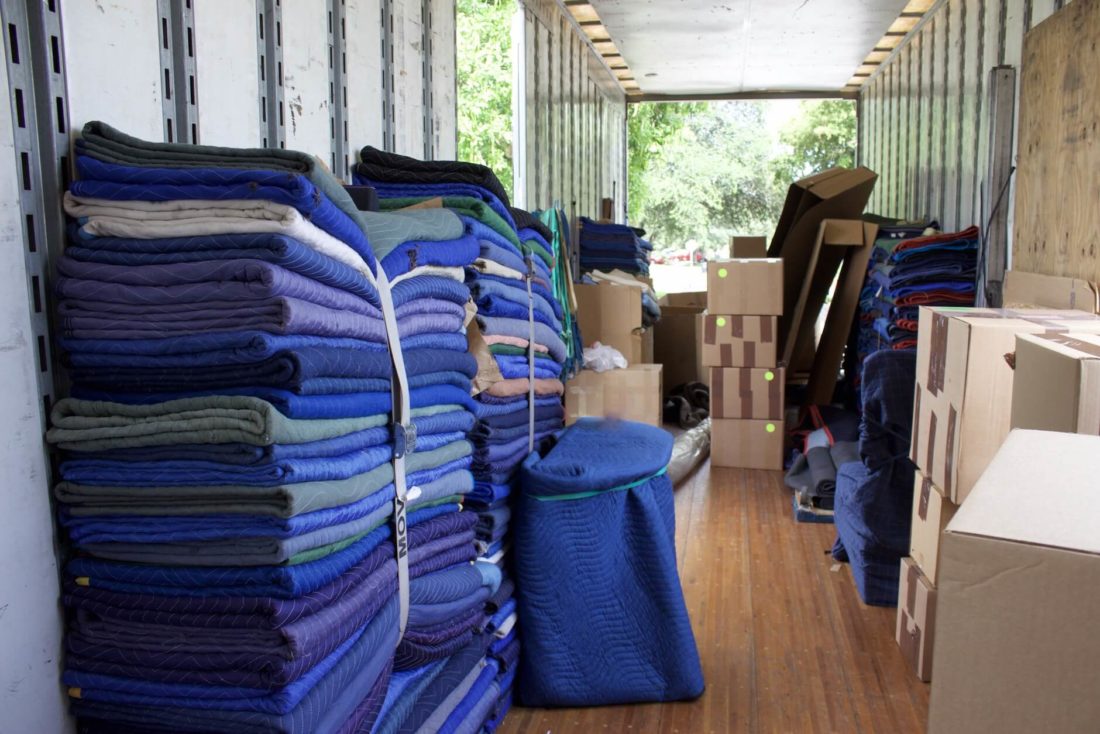

Consider Different Safe Moving Practices
When preparing for a relocation to another state, the safety of your items is important. Yet, the way in which you handle your items also plays a pivotal role in preserving the integrity of your floors and personal well-being. By adopting various safe relocation practices, you can ensure that everything from your cherished furniture and fragile items to your irreplaceable flooring remains unscathed.
Practice Effective Lifting Techniques
The way you lift and carry items can make a world of difference. When lifting furniture or heavy boxes, always bend at the knees, not the waist. This approach not only protects your back but also allows for more control, reducing the chance of dragging items across the floor.
It’s vital to remember that moving is a team effort. Coordination and communication with others are essential, especially when handling bulky items. By working in tandem and communicating effectively, you can easily navigate obstacles and place items down gently, ensuring that neither the object nor the floor incurs any damage.
Utilize Furniture Sliders
For those hefty pieces that are a challenge to lift, furniture sliders are a saving grace. These simple tools, placed under furniture legs, greatly reduce friction, allowing for smoother movement across the floor. They make relocating large items not only easier but also safer for the floor beneath. To use them effectively, gently tilt the furniture piece and place a slider under each leg, ensuring the smooth side of the slider is in contact with the floor.
Consider Using a Dolly
A dolly, or hand truck, can be instrumental in lifting heavier items. By distributing the weight and allowing for easy rolling, a dolly makes transporting bulky items simple. When using a dolly, it’s crucial to move at a controlled pace to prevent sudden jerks that might damage the floor. Ensure the wheels are clean and free of debris. Placing protective sheets on the floor’s path can also act as an added buffer against potential dolly wheel damage.
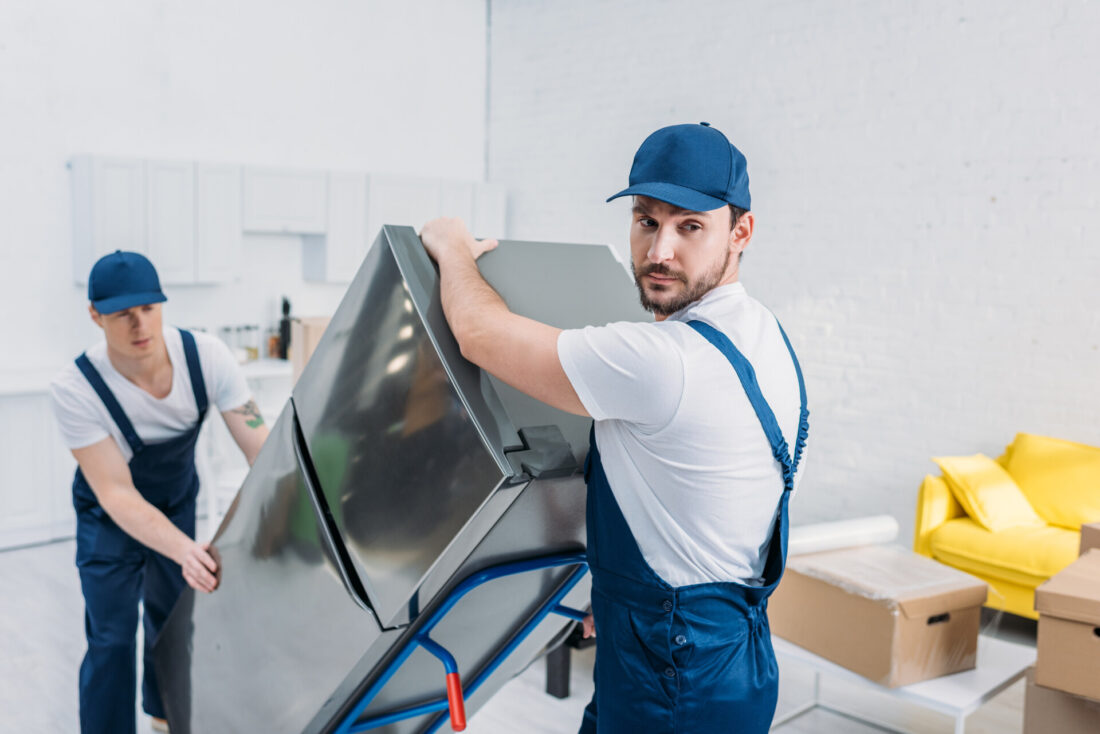

Protecting the Floors Will Make the Movers’ Job Easier
Ensuring your floors are well-protected during relocation not only preserves the aesthetics and longevity of the surface but also greatly assists your relocation team, especially if you plan on hiring a long-distance moving company. A smooth, unobstructed path with protective measures in place can speed up the process.
Movers can perform cross-country moving services with confidence, knowing that the ground they tread upon is safeguarded, minimizing the chances of slips or trip-ups. This way, not only do you get the peace of mind of protected floors, but you also facilitate a more swift and efficient relocation process.
The Benefits of Hiring Long-Distance Movers
When it comes to relocating to another city, hiring a team of professional long-distance movers is a choice you won’t regret. Their expertise and resources can make what seems like an insurmountable task surprisingly manageable. Benefits of relocating with movers include:
- Specialized equipment – They come equipped with tools and vehicles specifically designed for long-distance moves.
- Experience and expertise – They will ensure efficient packaging, handling, and transportation of your precious belongings.
- Time-efficiency – Professionals can execute a relocation more quickly than untrained individuals, saving you valuable time and energy.
- Insurance and liability – Your items are insured, offering added peace of mind in case of unforeseen mishaps.
- Customized services – Whether you need packing assistance or storage solutions, they can cater to your specific needs.
- Cost-effective – Despite the initial investment, hiring professionals can save money on potential expenses from damages or mishandling.
- Stress reduction – Knowing experts are managing your move allows you to focus on other critical aspects of your relocation without any anxiety about relocating.
Follow Our Guide to Preserve Your Floors and Hire Long Distance USA Movers to Help You Relocate
Safeguarding your flooring during a relocation is not just about preserving aesthetics – it’s about securing your investment, ensuring safety, and avoiding future repair costs. While individual diligence plays a role, having a reliable partner can make all the difference. Long Distance USA Movers doesn’t just transport your belongings – we understand the intrinsic value of every aspect of your home.
With a reputation for meticulous care, we prioritize not only the safe transit of your items but also the condition of your property during shipping. By entrusting your relocation to dedicated professionals, you complement your personal efforts in floor preservation. Together, with your careful preparation and our expert handling, the integrity of your floors can remain uncompromised, making your move a seamless, stress-free experience. Don’t waste any time – contact us to get your free quote!
FAQ
Why Is It Important to Protect Floors During a Move?
Protecting floors during a relocation is crucial for several reasons. Firstly, whether you’re vacating a rented space or selling your home, maintaining the floor’s condition is essential to avoid deductions from security deposits or potential reductions in your home’s selling price. Damaged floors can also be a safety hazard, leading to trips or falls. Plus, repair or replacement can be costly and time-consuming.
What Types of Protective Materials Are Recommended for Different Floors?
Different floors demand different protection. For hardwood or laminate floors, felt pads and plywood sheets can distribute weight and prevent scratches. Soft, non-slip rugs or runners can also be used. Carpeted floors benefit from plastic film protectors that prevent dirt and avoid tearing. Tiles, being prone to cracks, might require a combination of soft rugs and plywood, especially in areas with heavy foot traffic.
How Can I Create a Safe Moving Path to Prevent Floor Damage?
To create a safe path, first, clear any obstacles from the main traffic areas. Then, lay down your protective materials, ensuring they’re secure to avoid slippage. It’s advisable to have one consistent path that everyone uses so you’re only cleaning and checking one route. If there are any steps or uneven surfaces, mark them clearly.
What Are Furniture Sliders, and How Do I Use Them Effectively?
Furniture sliders are thin pieces of material, often made from plastic and rubber, designed to reduce friction. They’re placed under heavy furniture’s legs, allowing them to be slid across floors with minimal effort and without causing damage. To use them, gently lift or tilt the furniture piece and place a slider under each leg. Ensure the smooth side of the slider faces the floor. Once in place, furniture can be pushed or pulled smoothly.
Are Plastic Covers Effective in Preventing Spills and Dirt on Floors?
Yes, plastic covers, like adhesive carpet films or plastic drop cloths, are especially effective in preventing spills and dirt. They act as barriers against moisture, dirt, and other debris. This is especially true for areas where there might be liquids or where people might walk in from outside. However, plastic covers should be taped down securely to prevent tripping hazards or slippage.







